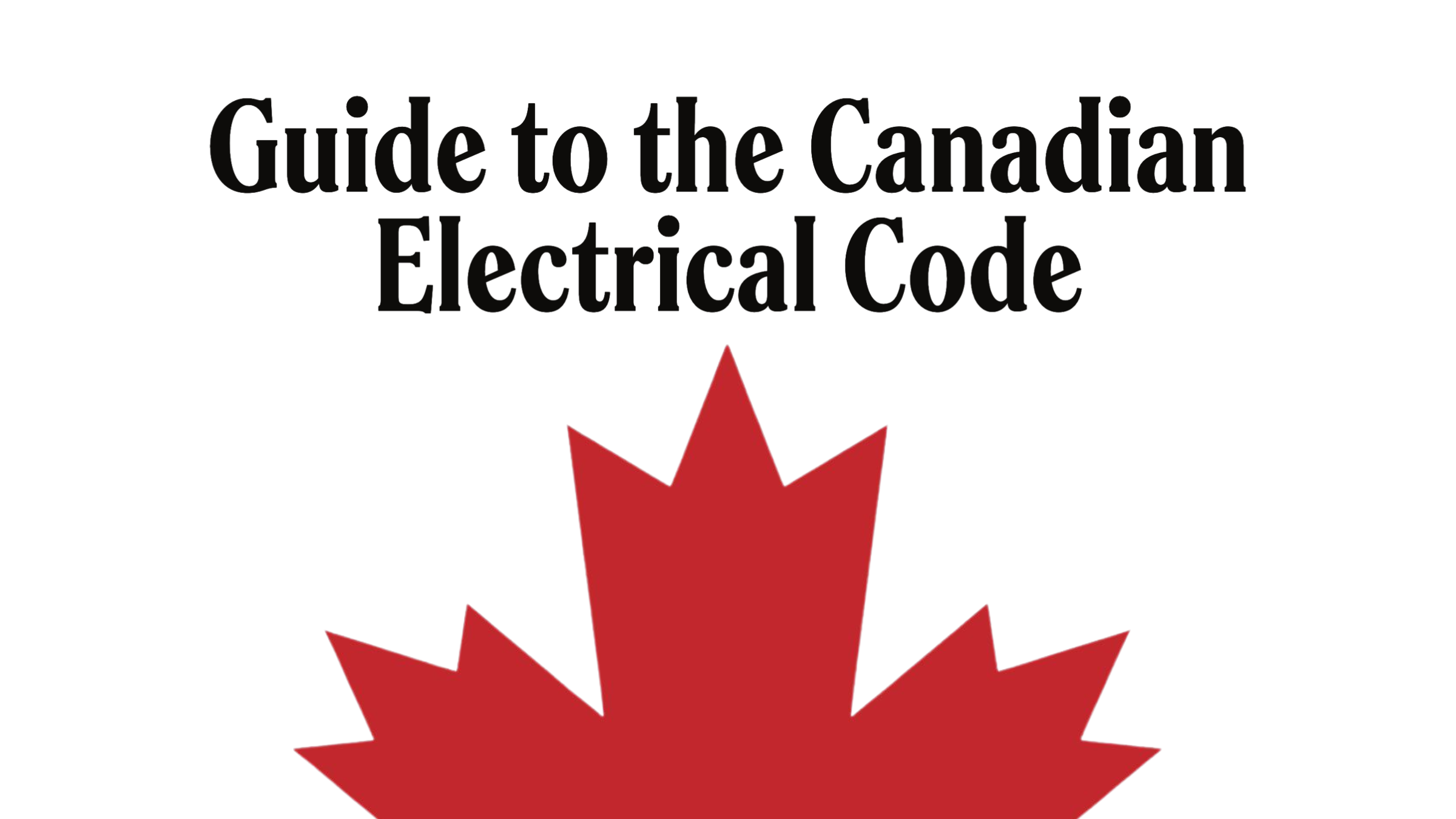Guide to the Canadian Electrical Code, Part 1[i], 26th Edition– A Road Map: Section 4

January 7, 2024
by William (Bill) Burr[i]
The 26th Edition of the Canadian Electrical Code, Part 1 (CSA C21-1:24) will be published and available in March 2024. Go HERE to pre-order a copy.
[i] William (Bill) Burr is an associate member of the Canadian Electrical Code, Part 1, Technical Committee and formerly Chair of the Canadian Advisory Council on Electrical Safety (CACES), Chief Electrical and Elevator Inspector for the Province of BC & the Northwest Territories, Director of Electrical and Gas Standards Development and Director of Conformity Assessment at CSA Group. Bill can be reached at Burr and Associates Consulting billburr@gmail.com..

Often, Code users encounter situations where they find themselves at odds with the rules contained in the Canadian Electrical Code, Part I (the Code). These situations usually are a result of a misreading, misunderstanding, misapplication, or inability to locate the requirement that is needed or that is relevant to their tasks.
The Code is a comprehensive document. Sometimes, it can seem daunting to quickly find the information you need. This series of articles provides a guide to help users find their way through this critical document. This is not intended to replace the notes in Appendix B or the explanations of individual requirements contained in the CEC Handbook, but will hopefully provide some help in navigating the Code.
Section 4 – Conductors
The definition of Conductor, from Section 0 is a conductive material that is constructed to carry electric current and includes:
- Bare Conductor – a conductor having no covering or insulation,
- Covered conductor – a conductor covered with a dielectric material not rated dielectric strength, and
- Insulated conductor – a conductor covered with a dielectric material having a rated dielectric strength. (Note that a dielectric material conducts practically no current due to polarization).
Scope
Rule 4-000 through the Scope of Section 4 deals with the determination of conductor ampacity for specific conditions of use, maximum conductor termination temperature, selection of a neutral conductor, and conductor identification. This Section does not apply to other conductors except where specifically referenced in other Sections of the Code. Section 4 is a general section and therefore it applies to conductors for services, feeders, branch circuits, and photovoltaic circuits in ac and dc systems. The selection of other conductors, such as for control, grounding, emergency, safety, fire alarms, airport installations, renewable energy, communications, cathodic protection, and others, will be governed by individual sections covering these situations. Appendix B notes that branch circuits include lighting, appliance, power supply circuits, flexible cords and equipment wires are covered by Section 4.
Individual sections such as: Section 6 – Services and service equipment, Section 8 – Circuit loading and demand factors, Section 10 – Grounding and bonding, Section 12 – Wiring methods, Section 14 – Protection and control, Section 16 – Class I and Class II circuits, and Section 26 – Installation of electrical equipment; may also apply as general sections or may have rules that reference or amend Section 4. For this reason, it is important to compare the rules in Section 4 with the rules governing conductors in the section dealing with your installation.
Size of conductors
Rule 4-002 requires that the minimum size for all copper conductors, except for flexible cord, equipment wire, or control circuit insulated conductors and cable, and insulated conductors, which are specifically covered by other Sections, is No.14 AWG copper and No. 12 AWG aluminum.
However, in Section 6, Rule 6-302 – Installation of overhead consumer’s service conductors requires that the minimum size for overhead consumer’s service conductors is No.10 AWG copper or No. 8 AWG aluminum. Even though there are amendatory sections and rules later in the Code, it is still very important that you refer to Section 4, first, when selecting and installing any conductor.
Note that the use of conductors in IEC (mm2) sizes listed in the newly added Table D18 are permitted, provided that the ampacity and corresponding AWG or kcmil size is selected following Rule 4-004; and the cross-sectional area of the listed IEC (mm2) conductor is not less than the cross-sectional area of an AWG or kcmil conductor that would be selected as above.
Ampacity of wires and cables
Rule 4-004 Specifies that when selecting a conductor, there are several factors to be considered. Because of the complexity of conditions, you need to have a process to determine the correct type and size for your application. The first consideration is to choose the size of conductor you need based on:
- the current it will be required to carry,
- the conditions under which it will be installed, and
- the type of conductor or cable to be used.
Rule 4-004 contains 7 items in each of subrules (1) and (2) covering scenario options for each of copper and aluminum that need to be studied and chosen. In addition, there are 23 other factors in the subsequent subrules that need to be considered. Although this may seem daunting at first, it is simply a matter of going through the list of options and conditions and choosing the ones that apply to your situation. Rule 4-004 will then direct you to the correct table and correction factor for your situation. In some cases, you will be directed to use the IEEE 835 calculation method or the tabulated information tables in Appendix D. The IEEE 835 Standard Power Cable Ampacity Tables – available here – https://standards.ieee.org/standard/835-1994.html contain all pertinent equations and has the electrical/thermal analog circuit and calculation examples in the annex.
Temperature limitations
Rule 4-006 – Once the right ampacity has been chosen or calculated, the next factor to consider is the temperature limitations on the conductor ampacity you have chosen. Where the maximum conductor termination temperature is marked on the equipment, you will have already chosen the minimum size of the conductor based on the correct temperature column of Tables 1, 2, 3 or 4. Where the maximum conductor termination temperature is not marked on the equipment, the temperature to be used is:
- 60 0 C for equipment rated 100 A or less or marked for use with No.1 AWG or smaller conductors, or
- 750 C for equipment rated more than 100 A or marked for use with conductors larger than No. 1 AWG.
It should also be noted that these conditions only apply to the first 1.2 meters of conductor length, measured from the termination point of the equipment.
Induced voltages and currents in metal armour or sheaths of single-conductor cables.
Rule 4-008 – One other condition to note is when using a single conductor cable with a metal sheath or armour that, induced voltages may cause the conductor insulation temperature to exceed its rating. In this case, Rule 4-008 requires you to derate the conductor along with some other procedures to mitigate this situation.
Conductor Selection
The next important consideration outlined in Rules 4-010, 4-012 and, 4-014 is the selection of the type of insulated conductor, flexible cord, equipment wire or portable power cable. In some cases, these rules will specify minimum sizes and ampacities for the various types.
Common neutral conductor
Next, we go back to Rules, 4-016, 4-018, 4-020, 4-022, 4-024, 4-026, 4-028, and 4-030 which provide for the use of a common neutral, installation, identification, and use of neutral and identified conductors.
Identification of insulated conductors
Rule 4-032 outlines the colour of insulation or label of grounding and bonding conductors, colour-coded circuits and barriered and separated insulated and grounded conductors in a 4-wire delta-connected system.
Ampacity of portable power cable
Rule 4-034 outlines the size and maximum current of conductors contained in a portable power cable including when Type DLO cable is used in a cable tray.
Busbar
Rule 4-036 specifies the ampacity of bare busbars where installed in accordance of Rule 12-2600.
You will note that Section 4 does not apply to non-insulated grounding or bonding conductors. The use, size and ampacity of these conductors are covered by Section 10, which we will deal with in a subsequent instalment.
Previous Installment: Section 0 and Section 2
In the next instalment, we will explore Section 6 – Services and service equipment.
[i] Source: CSA C22.1:21, Canadian Electrical Code, Part 1 – Safety Standard for Electrical Installations. © 2021 Canadian Standards Association. Please visit Store – CSA Group or call 1-800-463-6727. With the permission of CSA Group, the material is reproduced from CSA Group standard CSA C22.1:21, Canadian Electrical Code, Part 1 – Safety Standard for Electrical Installations. This material is not the complete and official position of CSA Group on the referenced subject, which is represented solely by the Standard in its entirety. While use of the material has been authorized, CSA Group is not responsible for the manner in which the data are presented, nor for any representations and interpretations. No further reproduction is permitted. For more information or to purchase standard(s) from CSA Group, please visit Store – CSA Group or call 1-800-463-6727.

















